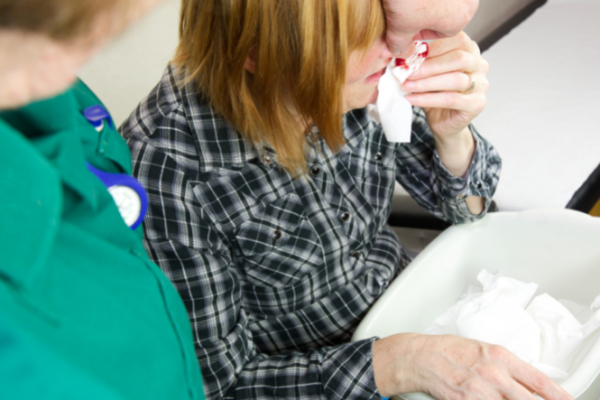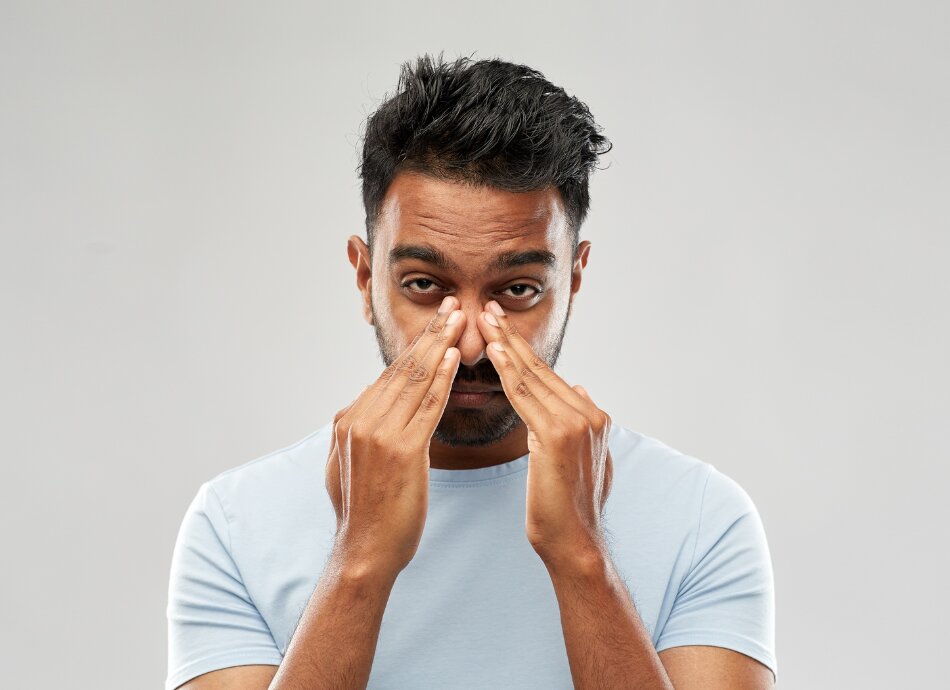A knock to your head or face can also cause more serious injuries
Seek emergency help if:
- clear fluid is trickling from your nose (call 111 for an ambulance as you may have a serious head injury).
- you have a severe headache, neck pain or a stiff neck. This is especially important if you have numb or tingling arms, blurred or double vision or other symptoms of a severe head injury, eg, loss of consciousness or repeated vomiting.
You should see a healthcare provider quickly if you have:
- a nosebleed that won't stop
- a cut or graze over your nose
- a blood clot or swelling inside your nose between your nostrils. This may be a septal haematoma, which needs to be drained straight away.

Image credit: Canva






